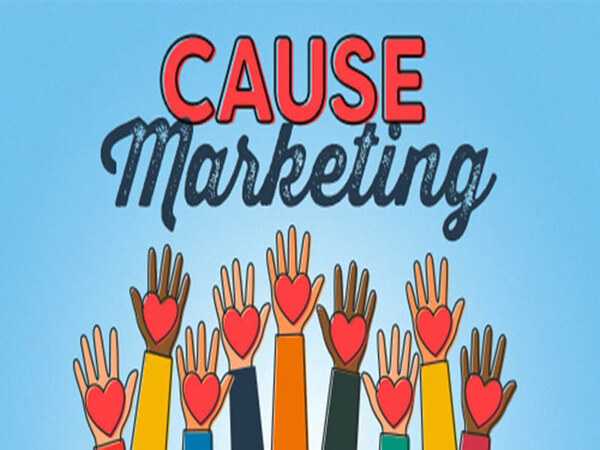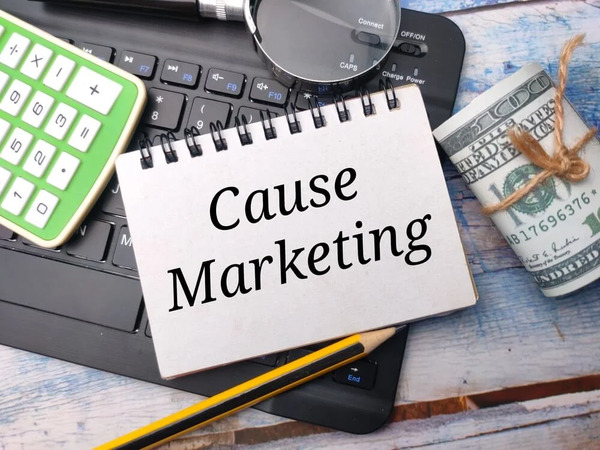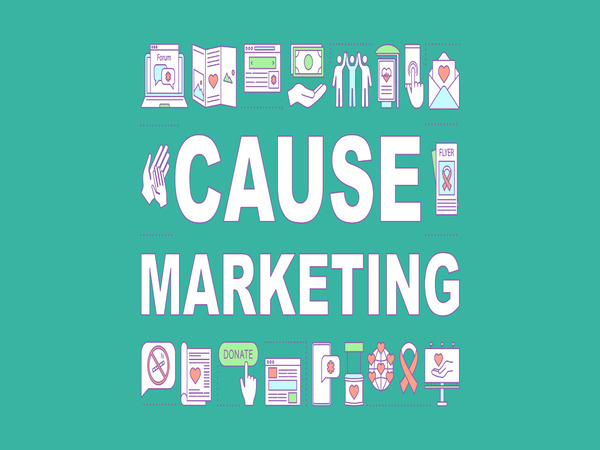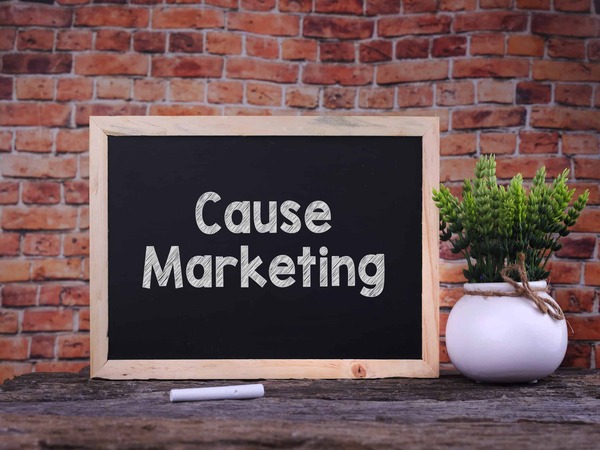Cause Marketing has become an important strategy that helps brands create value for the community while increasing their reputation in the market. More than just charitable campaigns, Cause Marketing also brings sustainable benefits to businesses when implemented correctly. So, what is Cause Marketing? How to build an effective Cause Marketing campaign? Let’s find out with Genfarmer in the article below.
What is Cause Marketing?

Cause Marketing is a marketing strategy in which a business partners with a non-profit organization or supports a social cause to create mutual benefits for both parties. This form of marketing not only helps raise public awareness of an important issue but also helps businesses build a positive brand image, connect with customers, and increase their loyalty.
Some popular Cause Marketing campaigns include programs that donate a portion of revenue to charity, environmental protection campaigns, or community support activities. When done correctly, Cause Marketing not only brings humanistic value but also helps businesses increase revenue and expand their customer reach.
Benefits of Using Cause Marketing

By combining business activities with community goals, businesses can enhance their brand image, increase customer loyalty, and create sustainable values. Below are the significant benefits that Cause Marketing brings.
Enhance Brand Image
When a business participates in cause-related marketing campaigns, it demonstrates responsibility to the community and the environment. This helps build a positive brand image, showing concern for important issues rather than just focusing on profit. Customers tend to support socially responsible brands, which in turn enhances the business’s reputation and standing in the market.
Increase Customer Loyalty
Customers are increasingly interested in the values that a business represents. When they feel a brand shares the same ideals as them, they tend to stay loyal for longer. Cause Marketing helps create an emotional connection between the brand and its customers, thereby increasing loyalty and encouraging them to continue supporting the business’s products and services.
Differentiate from Competitors
In a fiercely competitive market, Cause Marketing helps a business stand out by demonstrating its commitment to the community. Campaigns with social significance can help a brand make a mark in customers’ minds, differentiating it from competitors who only focus on traditional product promotion.
Increase Revenue and Expand Market
Besides building a brand image, Cause Marketing also has a positive impact on revenue. When customers have a favorable view of a brand, they are willing to spend more and recommend its products and services to others. At the same time, meaningful campaigns can also attract the interest of new customer groups, helping the business expand its market and increase business opportunities.
Contribute to Sustainable Social Development
Cause Marketing not only benefits the business but also contributes to solving social issues. When companies engage in activities such as environmental protection, supporting education, or helping people in difficult circumstances, they are working together to build a better society. This not only brings long-term value but also creates a positive ripple effect in the community.
Steps to Build an Effective Cause Marketing Campaign

Cause Marketing not only helps businesses demonstrate social responsibility but also builds trust and loyalty from customers. However, for a Cause Marketing campaign to be truly effective, a business needs a clear plan and systematic implementation. Below are the important steps to build a successful Cause Marketing campaign.
Define the Campaign’s Objectives
Before starting, the business needs to clearly define the objectives the campaign aims to achieve. These could be raising awareness about a social issue, calling for action, fundraising for charity, or supporting a specific community. Defining objectives helps the business plan and measure the campaign’s effectiveness later on.
Choose a Suitable Form of Contribution
There are many ways for a business to engage in Cause Marketing, such as donating a portion of revenue to a charity, organizing fundraising events, or providing free products/services to those in need. The business needs to choose a form of contribution that fits its industry, resources, and financial capacity to ensure the campaign is sustainable.
Engage the Community
To do this, the business can organize interactive activities such as online challenges, collective fundraising programs, or social media campaigns. When customers feel like they are a part of the campaign, they will be more motivated to participate and spread the message more powerfully.
Create a Highlight for the Campaign
Creativity and distinctiveness are key factors that help a campaign stand out among numerous other charitable programs. A business can create a highlight by building an inspiring story, using impressive images/videos, or collaborating with celebrities to increase its influence. A campaign with a strong and meaningful message will easily attract public attention.
Choose the Right Timing
The timing of the campaign also plays a crucial role in attracting community interest. For example, environmental protection campaigns can be held on Earth Day, while programs supporting underprivileged children can be organized during the Mid-Autumn Festival or back-to-school season. Choosing the right time will help the campaign be more effective and reach its target audience more easily.
Publicly Report the Results
After the campaign ends, the business needs to publicly report the results to ensure transparency and strengthen community trust. The report can include the amount of money raised, the number of beneficiaries, and the positive impacts the campaign has brought. Additionally, the business can share real stories to inspire and call for participation in future campaigns.
Tips for a Successful Cause Marketing Campaign

Not every campaign achieves the expected results. To ensure success, businesses need to pay attention to several key factors that help the campaign create a positive and sustainable impact. Here are important tips to help businesses successfully implement a Cause Marketing campaign.
Genuinely Stem from Compassion
A Cause Marketing campaign is only truly effective when it is carried out with sincere intentions, stemming from a desire to contribute to society rather than just being an advertising gimmick. If the business only sees it as a mere marketing tool, customers will easily notice, and the campaign could backfire. Therefore, the business needs to choose activities that align with its core values and commit to them long-term.
Choose a Relevant Cause
For the campaign to be most effective, the business should choose a social cause that is relevant to its industry. For example, a cosmetics brand could participate in animal or environmental protection programs, while a food company could support anti-poverty organizations. Choosing a relevant issue will make the campaign more persuasive and easier to connect with the target customers.
Contributions Don’t Have to Be Monetary
A common mistake in Cause Marketing is thinking that only cash donations have a significant impact. In reality, businesses can contribute in many other ways, such as providing free products/services, organizing volunteer activities, or using their platform to raise community awareness. Choosing a contribution method that fits available resources will make the campaign more effective and sustainable.
Formalize Relationships with Non-Profit Organizations
Partnering with reputable non-profit organizations will make a Cause Marketing campaign more transparent and trustworthy. This not only helps the business easily reach the intended beneficiaries but also enhances customer trust. When partnering, the business should sign a clear agreement on responsibilities and implementation methods to ensure the campaign runs smoothly and avoid misunderstandings.
Build a Good Marketing Campaign
Even with a great idea, a Cause Marketing campaign still needs a well-structured communication plan to reach the right audience and create a strong viral effect. Businesses can leverage communication channels such as social media, websites, email marketing, or collaborate with celebrities to increase visibility. An inspiring message, combined with high-quality images/videos, will help the campaign attract attention and drive action from the community.
Examples of Cause Marketing
In Vietnam, many businesses have successfully implemented cause-related marketing campaigns, bringing practical benefits to those in need. Below are two typical examples of Cause Marketing from major brands.
Vietnam Rising Milk Fund – Vinamilk

The Vietnam Rising Milk Fund is a program initiated by Vinamilk in 2008 with the goal of providing free milk to underprivileged children across the country. Through this fund, millions of glasses of milk have been donated, helping to improve nutrition and enhance the physical condition of Vietnamese children. This is a prime example of Cause Marketing where a business uses its own product to bring practical value to society while spreading the message about the importance of nutrition for children.
Firefly Study Encouragement Fund – Dutch Lady

The Firefly Study Encouragement Fund is an initiative of the Dutch Lady milk brand (part of FrieslandCampina Vietnam) to support studious but poor students. Since 2002, this fund has built hundreds of new schools, awarded thousands of scholarships, and accompanied many children on their educational path. This campaign not only demonstrates the company’s social responsibility but also builds long-term trust and connection with customers, especially parents and students.
Conclusion
Cause Marketing not only helps businesses enhance their brand image but also creates meaningful value for society. When implemented correctly, this strategy not only attracts customer attention but also builds long-term loyalty. Hopefully, through this article, you have a better understanding of Cause Marketing and can successfully apply it to your business strategy.











